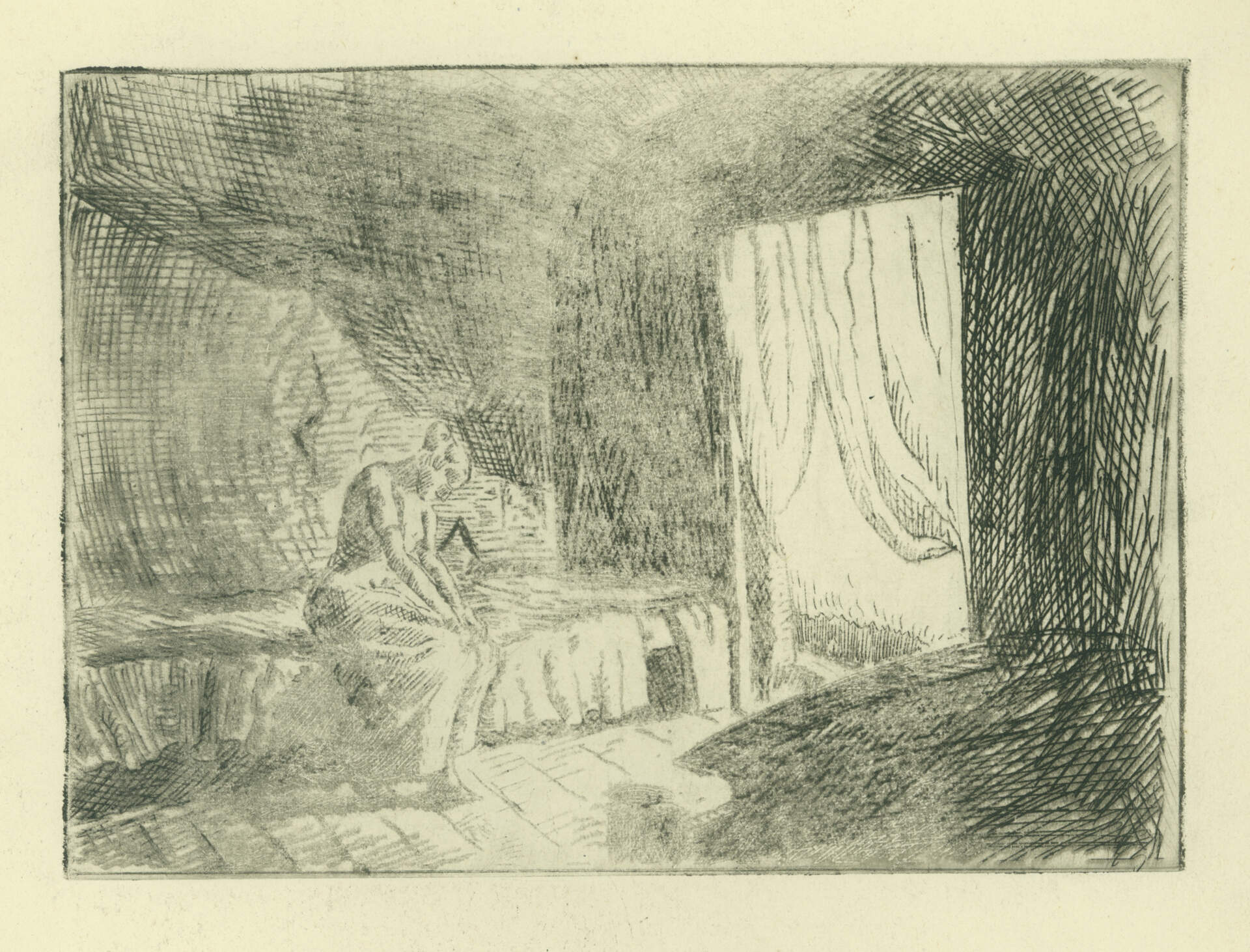Charles E. Burchfield (1893-1967)Dejection
1919
intaglio on paper; trial proof probably printed by Frank N. Wilcox (1867-1939)
5 x 6 7/8 inches (plate), 14 x 10 (sheet)
Burchfield Penney Art Center, Gift of the Charles E. Burchfield Foundation, 2006
While some of the subjects of Burchfield’s zinc etchings were based on caricatures of local inhabitants, others may have been modeled after Sherwood Anderson’s burdened characters in Winesburg, Ohio, which Burchfield had read shortly after it was published in 1919. Dejection, for example, is an unusual composition for Burchfield of a woman seated on a bed in an oppressively darkened room. She is perched with head bent low, hands held together on tightly clasped knees, absorbed in despondent thoughts, oblivious to the promise of a brighter future represented by a backlit, curtained window.
This foray into figurative subject matter and dramatic structure might be compared to Edvard Munch’s 1894 lithograph, The Young Model (Puberty), portraying a sexually uncertain adolescent girl seated naked on a bed, hands crossed at her knees, melded to the ghoulish shape of her own towering black shadow; or his 1894 drypoint and aquatint print, Compassion, in which the same nude young woman, hands held to her distraught face, is comforted by the embrace of a nude male youth.
Burchfield lists several subjects of his etchings as “imaginary,” yet they each convey, whether consciously or unconsciously, the fluctuating melancholy and joy of his own experience back at home after his discharge from the Army, unattached, future uncertain, but rejuvenated by the unchanging countryside and old routines. Depression clouded his perception of new paintings, and he destroyed many. Not uncommonly, restlessness and a seemingly fallow period precede significant change for an artist.
—Nancy Weekly
